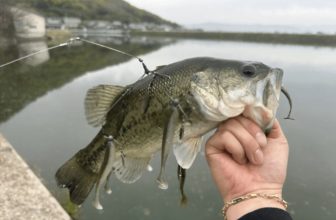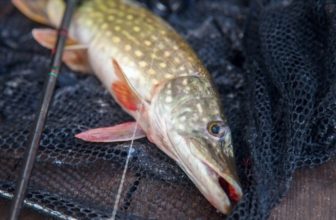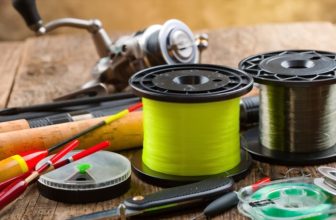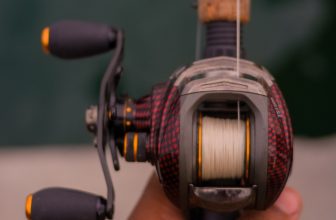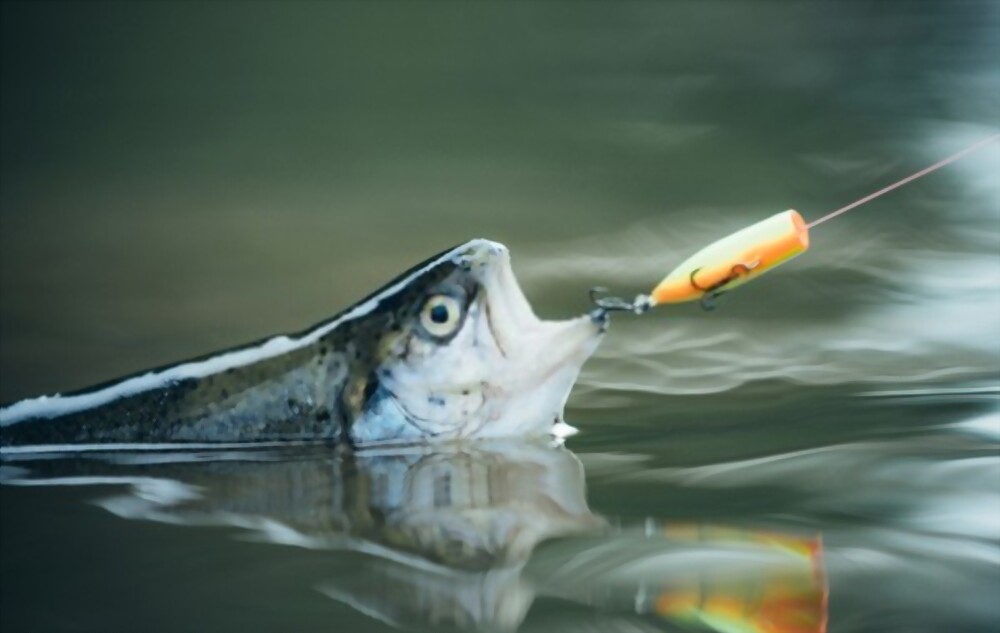
Are you tired of struggling to catch the perfect trout? Have you tried every technique and lure in the book, but still feel like something is missing? It’s time to consider the importance of line weight in trout fishing.
Finding the right line weight can make all the difference in your success on the water, and this article will guide you on your quest to discover the holy grail of fishing line weight. In this article, you will explore different line materials and brands, test various line weights in real fishing situations, and evaluate the pros and cons of different line options.
By the end of your journey, you will have discovered the perfect trout line weight for your fishing style and be well on your way to reeling in the biggest catch of your life. So, grab your fishing gear and get ready for the ultimate trout line quest!
Understanding the Importance of Line Weight for Trout Fishing
You need to understand why line weight is crucial for catching those elusive trout, so let’s dive in!
When it comes to trout fishing, the weight of your line can make all the difference. A line that’s too heavy can spook the fish and make them less likely to bite, while a line that’s too light may not be able to handle the weight of the fish, causing it to break.
The key is to find the perfect balance between the weight of your line and the size of the fish you’re trying to catch. For example, if you’re fishing in a small stream or creek, a lighter line may be more appropriate, as the fish tend to be smaller and the water is more shallow. On the other hand, if you’re fishing in a large lake or river with bigger fish, a heavier line may be necessary to handle the weight and fight of the fish.
In addition to the size of the fish and the body of water you’re fishing in, other factors such as wind, current, and the type of lure or bait you’re using can also affect the weight of your line. It’s important to take all of these variables into consideration when selecting the right line weight for your trout fishing needs.
Exploring Different Line Materials and Brands
Now let’s take a look at some of the different materials and brands available for your fishing line needs.
When it comes to trout fishing, nylon monofilament lines are the most popular choice. They’re affordable, easy to handle, and have a low memory, which means they don’t retain a lot of curls or twists.
Fluorocarbon lines, on the other hand, are virtually invisible underwater and sink faster than nylon, making them a great choice for deep-water fishing.
When it comes to brands, there are a lot of options to choose from. Some popular brands for trout fishing lines include Berkley, Rio, and Scientific Anglers. Each brand offers a variety of lines with different features, such as weight, strength, and sensitivity. Some brands even offer lines specifically designed for nymph fishing, which can be a great option if you’re looking to target trout in fast-moving water.
Overall, the key to finding the right line material and brand for your trout fishing needs is to experiment and see what works best for you. Every angler has their own preferences and techniques, so what works for one person may not work for another.
Try out different materials and brands, and pay attention to how they perform in different situations. With a little trial and error, you’ll be able to find the perfect line for your next trout fishing adventure.
Testing Various Line Weights in Real Fishing Situations
As you’re out on the water, imagine trying out different line weights in real fishing situations to see which one works best for you. It’s important to remember that finding the perfect line weight is a personal journey, and what works for one angler may not work for another.
Start by trying out a variety of weights, starting with the lightest and gradually moving up. Pay close attention to how the line feels in your hand, how it casts, and how it performs when reeling in a fish.
Don’t be afraid to experiment with different line weights in different fishing situations. For example, if you’re fishing in a fast-moving stream, a lighter line weight may be more effective because it will allow your bait to move more naturally with the current. On the other hand, if you’re fishing in a lake or pond with a lot of vegetation, a heavier line weight may be necessary to prevent your line from getting tangled.
Ultimately, the best way to find your holy grail of fishing line weight is through trial and error. Keep a journal to record your experiences with different line weights, and don’t be afraid to ask other anglers for advice.
With patience and persistence, you’ll eventually discover the perfect line weight that will help you catch more fish and enjoy your time on the water even more.
Evaluating the Pros and Cons of Different Line Options
Exploring the different types of fishing line available can be a helpful way to determine which options have the most advantages and disadvantages for your individual needs.
Monofilament line, for example, is a popular option due to its affordability and versatility. It’s easy to handle and can be used in a variety of fishing situations. However, it does have a tendency to stretch which can make it harder to detect bites and set the hook.
Fluorocarbon line is another option to consider. While it’s more expensive than monofilament, it’s known for its invisibility underwater and its low stretch. This makes it an excellent choice for finesse fishing and for catching line-shy fish. However, it can be more difficult to handle due to its stiffness.
Braided line is yet another option that has gained popularity in recent years. It’s known for its strength and sensitivity, making it a great choice for targeting big fish or fishing in heavy cover. However, it’s also more visible underwater and can be more difficult to tie knots with.
Evaluating the pros and cons of each option can help you determine which line will work best for your specific fishing needs, ensuring that you have the right tool for the job.
Discovering the Perfect Trout Line Weight for Your Fishing Style
To find the optimal line weight for your personal fishing style, you’ll need to consider factors such as the size of the trout you’re targeting and the type of water you’ll be fishing in.
For smaller streams and creeks, a lighter line weight of 1-3 may be more appropriate, as the fish are typically smaller and the water is shallower. However, if you’re targeting larger trout in bigger rivers or lakes, a heavier line weight of 4-6 may be necessary to handle the stronger currents and bigger fish.
Another factor to consider is the type of fly you’ll be using. If you’re using dry flies or small nymphs, a lighter line weight may be more appropriate to cast the delicate presentation needed for these types of flies. However, if you’re using larger streamers or weighted nymphs, a heavier line weight may be necessary to cast the heavier flies and get them down to the fish.
Lastly, consider your own personal preferences and casting style. If you prefer a slower, more delicate presentation, a lighter line weight may be better suited for you. On the other hand, if you prefer a faster, more aggressive casting style, a heavier line weight may be more appropriate.
Ultimately, the perfect line weight for you will depend on a combination of these factors, as well as your own experience and skill level.
Finding the perfect trout line weight can be a challenging but rewarding quest. By considering factors such as the size of the trout, the type of water, and your own personal preferences, you can narrow down your options and find the line weight that works best for you. Remember to experiment and try different line weights to find the one that feels the most comfortable and effective for your own unique fishing style.
Frequently Asked Questions
What are the best fishing spots for trout?
For trout fishing, look for clear and cold water with plenty of structure such as rocks, logs, and vegetation. Streams and rivers with natural pools and riffles are ideal. Check local regulations for fishing restrictions.
How do I choose the right fishing rod for trout fishing?
When choosing a fishing rod for trout, consider the rod’s length, power, and action. A medium-light to light power rod with a fast action is ideal for trout fishing. Don’t forget to match your rod with the appropriate reel and fishing line.
What is the best time of day to fish for trout?
The best time of day to fish for trout is early morning or late afternoon. Trout tend to be more active during these times when the water is cooler, and the light is low.
Are there any specific types of bait or lures that work best for trout?
For trout, use live bait like worms or minnows, or opt for artificial lures like spinners or spoons. Vary your presentation and experiment with different colors to find what works best in your specific fishing spot.
How do I properly store my fishing line to ensure its longevity?
To ensure your fishing line lasts as long as possible, store it away from direct sunlight and heat. Make sure it is dry and avoid overfilling your spool. Regularly inspect and replace any damaged sections.
Conclusion
Congratulations! You’ve gone on the ultimate quest to discover the holy grail of fishing line weight for trout fishing.
By understanding the importance of line weight, exploring different materials and brands, testing various weights in real fishing situations, and evaluating the pros and cons of different options, you’ve finally discovered the perfect trout line weight for your fishing style.
Now that you’ve found your ideal line weight, you can confidently hit the water and catch some trophy trout.
Remember to always keep an eye out for new line options and technologies, as the fishing world is constantly evolving. But for now, enjoy your success and happy fishing!



